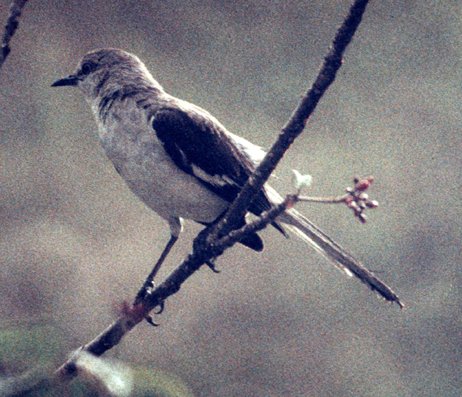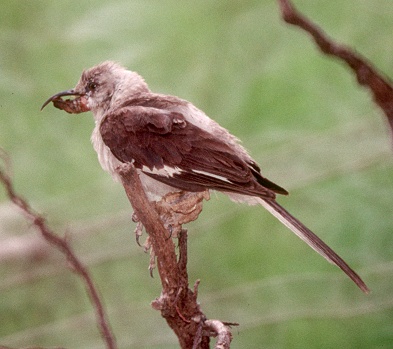|
Northern Mockingbird Mimus polyglottos Ruiseñor,
|
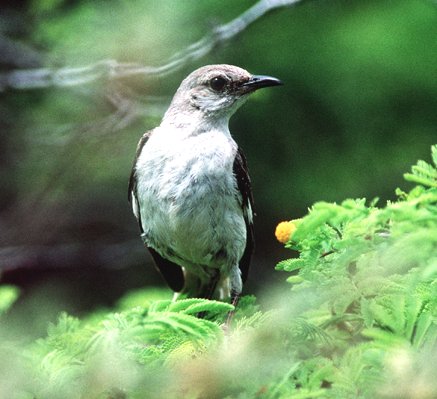 |
|
Photo: B. Hallett
|
|
IDENTIFICATION: A long-tailed, flamboyant bird; gray above and white below, with a white wing patch. Length: 23-28 cm.; weight: 43-50 g. VOICE: The song is a rambling, musical series of repeated phrases. Audio 3 (M. Oberle). The mockingbird often imitates other birds, as well as cats, cars, motors, and other odd noises in its environment. Birds that it likes to imitate include the Gray Kingbird, Red-legged Thrush and Black-whiskered Vireo. One mockingbird in North America was recorded as having 194 different phrases in its vocabulary. The Latin name, polyglottos, refers to this variety in its song. Both sexes will sing, but unmated males may sing persistently at night---especially under bright moonlight or artificial light---much to the distress of humans trying to sleep. The mockingbird sings from exposed perches, including antennae, and sometimes sings while leaping briefly into the air---like a rock star in concert. Its imitations can sometimes confuse human listeners. Once the author crashed into a brush-filled ditch to rescue an injured puppy, only to find that the "puppy" was a mockingbird. This species has several harsh call notes, including a "chak" note given at any time of year. HABITAT: Farms, open country and towns. HABITS: Often seen throughout the day on wires and other exposed perches, where it guards its territory---aggressively chasing cats, kingbirds, hawks and other mockingbirds. Its white wing and tail patches flash dramatically as it chases an intruder. Early in the year, both males and females of neighboring pairs will patrol territorial lines to clearly mark their boundary. It has a varied diet---mostly berries and seeds---but about 1/3 of the diet consists of spiders and insects, especially caterpillars, moths, grasshoppers, crickets and beetles, with a few ants and flies for variety. It builds a cup nest in a bush; the nest contains 3-4 spotted, green eggs. The female does most of the incubating while the male will later help in caring for the young. The mockingbird can be attracted to backyard bird feeders and plantings of fruiting shrubs and trees. STATUS AND CONSERVATION: A very adaptable and common bird in the lowlands of Puerto Rico, especially on the south coast. Mockingbirds in Puerto Rico were kept as pets for their song, and sold for $10-15 apiece in the early 20th Century. They were kept in a simple cage made of a gourd, with a string mesh on one side. Some people still keep them illegally as pets. RANGE: Occurs from southeastern Canada to southern Mexico; and in the Caribbean from the Bahamas east to the Virgin Islands. TAXONOMY: PASSERIFORMES; MIMIDAE |
|
 |
|
Photo: A. Sánchez
|
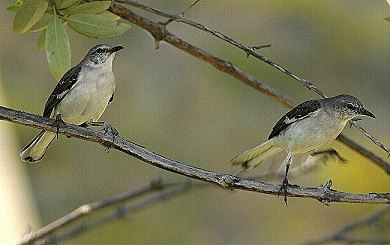 |
|
Photo: A. Sánchez
|
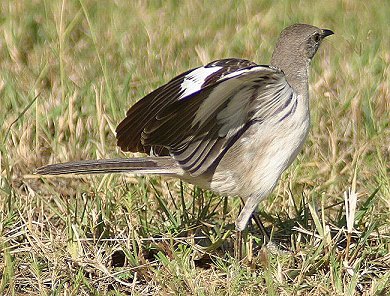 |
|
Photo: A. Sánchez
|
 |
|
|
Photo: B. Hallett
|
